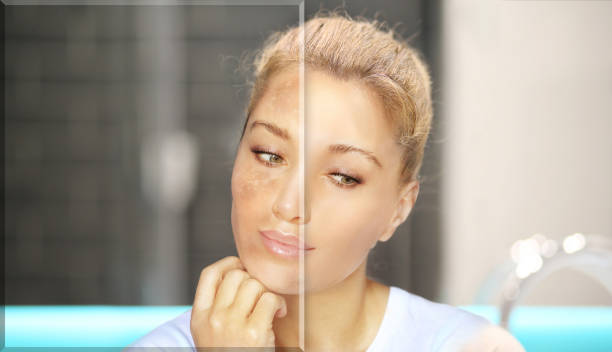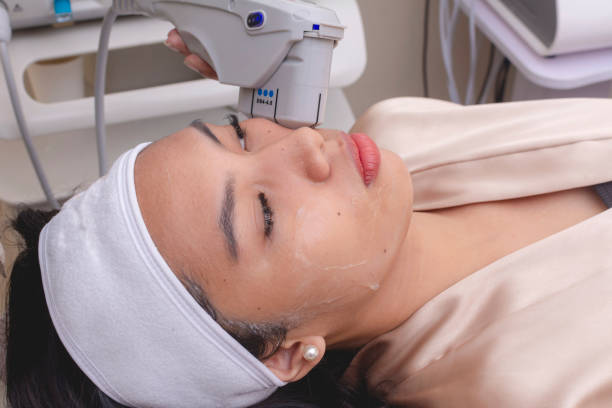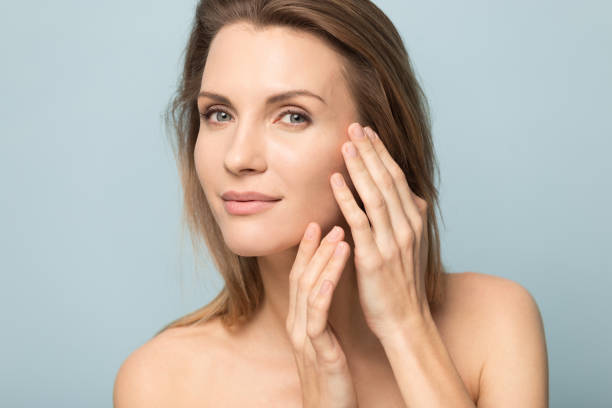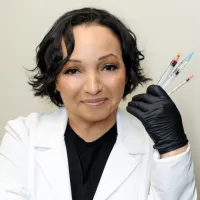BLOG

Venus Versa for Pigmentation & Uneven Tone
If you’ve ever stared at your reflection and fixated on dark spots, blotchy areas, or post-acne marks, you’re not alone. Uneven skin tone is one of the most common skincare struggles today, especially in a world where sun exposure, hormones, and breakouts leave behind lasting imprints. You might have tried vitamin C serums, kojic acid creams, or even expensive brightening kits, hoping to even out your complexion — only to be left disappointed by slow or inconsistent results.
That’s where Venus Versa for pigmentation and uneven tone comes in — an advanced, non-invasive device that uses Intense Pulsed Light (IPL) and Radio Frequency (RF) technology to fade dark spots, even out your complexion, and leave you glowing without the downtime of harsher treatments. It’s the ideal in-between solution — more effective than topicals, gentler than lasers.

Pigmentation issues don’t come out of nowhere. They’re often the result of daily exposure to the sun, inflammation from breakouts, hormonal changes, or simply the natural aging process. Over time, excess melanin — the pigment responsible for skin color — clusters in certain areas, forming visible discoloration.
Pigmentation can show up in many forms:
Sun spots from UV exposure, often on the cheeks and forehead
Melasma triggered by pregnancy or birth control, usually appearing as symmetrical patches
Post-inflammatory hyperpigmentation (PIH) from acne, eczema, or skin injury
Age spots caused by slowed cell turnover, especially in your 30s and beyond
What makes it so frustrating is that pigmentation often lives in the deeper layers of your skin — below where most serums or creams can penetrate. And while over-the-counter solutions might help fade discoloration slightly, they rarely get you that bright, even glow you’re after.
That’s why many professionals turn to Venus Versa, which uses advanced light-based therapy to go below the surface and break up pigment clusters at the root.
Want a more complete skin reboot? See how this treatment fits into the bigger picture in our Advanced Device Treatments (Venus Versa & More) guide.

Mdv Edwards via Pixabay
Venus Versa’s IPL PhotoFacial technology is a multitasking marvel. It delivers targeted pulses of light into the skin, which are absorbed by darker pigmented cells. The heat energy causes these pigment cells to shatter into smaller particles that your body then naturally eliminates through its lymphatic system.
But it doesn’t stop there — Venus Versa also uses Radio Frequency (RF) to stimulate collagen and elastin production. So while your pigmentation fades, your skin also becomes smoother, plumper, and more youthful-looking.
What Makes It Stand Out?
Precision: It targets pigmentation without damaging surrounding skin
Comfort: A cooling gel is applied before treatment to minimize discomfort
Speed: Most sessions are 15–30 minutes
No Downtime: Most clients walk out slightly pink and glowing, not irritated
This makes Venus Versa ideal for people with busy lifestyles — no long recovery periods or complicated routines. You get results fast, and they continue to improve with each session.
Your treatment begins with a thorough consultation. Your provider will assess your skin, identify the areas of concern, and customize the settings based on your skin tone and pigment type. After cleansing your skin, they’ll apply a layer of cooling gel and start the treatment.
Each pulse of the IPL device feels like a quick flick or rubber band snap. Some areas — like the upper lip or around the eyes — might be more sensitive, but it’s generally well-tolerated.
Immediately after, your skin might appear flushed. That glow usually settles within a few hours. You may also notice your dark spots temporarily darken — this is a good thing! It means the pigment is breaking up and rising to the surface before fading completely.
Aftercare Tips:
Sun protection is critical. Avoid sun exposure for at least 48 hours.
SPF 30+ daily. Always.
Keep your routine gentle. Avoid retinoids, exfoliants, or acids for 2–3 days.
Hydration. Use calming serums and rich moisturizers.
Want more on treatment experiences? Read through the step-by-step in our Advanced Device Treatments.

office 469 via Pixabay
While clinical stats are useful, what really sells people on Venus Versa is seeing what it does in real life. Clients from all walks of life — from busy moms to influencers — report noticeable improvements in pigmentation and tone.
Some say they noticed brighter skin after just one session. Others rave about how much their post-acne marks faded without needing makeup every day.
Common Client Feedback:
Everyone’s skin is different, of course, but Venus Versa's gradual improvement makes it feel safe, steady, and worth the commitment.
Not all pigmentation treatments are created equal. Depending on your skin type, severity of pigment, and downtime tolerance, some solutions work better than others.
Here’s a breakdown:
Laser Resurfacing:
Pros: Deep skin renewal, powerful results
Cons: High cost, significant downtime, risk of hyperpigmentation in deeper skin tones
Chemical Peels:
Pros: Exfoliates surface-level pigment, can improve texture
Cons: Multiple rounds needed, skin may flake or peel, risk of over-exfoliation
Topical Brighteners:
Pros: Easily accessible, affordable, ideal for maintenance
Cons: Slow results, superficial fading only
Venus Versa:
Pros: Non-invasive, treats below the skin, minimal downtime, combines pigment targeting with rejuvenation
Cons: Multiple sessions needed (3–5 on average)
Looking for other targeted uses of Venus Versa? Check out Venus Versa for Rosacea, Broken Capillaries & Redness to see how it helps with redness too.
One of the standout features of Venus Versa is its adaptability. It can be customized to different skin types and pigment depths, making it safe for most Fitzpatrick skin types I–IV.
However, your provider will need to carefully assess your tone and pigmentation type. Some forms of melasma or deeper PIH may require gentler protocols or combination therapies to avoid rebound pigmentation.
Venus Versa Is Best For:
Fair to medium skin tones with pigmentation or blotchiness
Those with sun damage or hormonal discoloration
Anyone wanting real results without harsh peels or lasers
Pigmentation doesn’t vanish overnight — especially when it’s caused by years of sun or hormonal changes. But with the right strategy, Venus Versa can fade spots significantly and give you a clear, even tone over time.
Suggested Treatment Timeline:
Session 1–2: Slight brightening, some pigment darkening then flaking off
Session 3–4: Spots visibly fading, tone looking more even
Session 5+: Skin looks radiant, post-acne marks barely visible
Once you reach your goal, maintenance is key.
Maintenance Tips:
Schedule a touch-up every 4–6 months
Stick to a brightening routine with niacinamide or vitamin C
Use SPF daily (seriously, don’t skip this)
Avoid picking at spots or breakouts to reduce PIH risk
Consistency is everything — both in treatments and aftercare.

If pigmentation has been holding you back from clear, confident skin, Venus Versa may be the solution you’ve been searching for. It’s a modern, low-downtime approach to fading discoloration, backed by science and real-world results.
Whether you’re new to device-based skincare or you’re ready to level up, Venus Versa offers a professional-grade boost to your routine. Just remember: results come from commitment — so pair your treatments with SPF, healthy habits, and patience.
FAQs
How many Venus Versa sessions do I need for pigmentation?
Most clients see visible improvement after 2–3 sessions, but for more stubborn pigmentation or melasma, 4–5 sessions may be needed for optimal results. Your provider will tailor a plan based on your skin’s condition and goals.
Is Venus Versa safe for darker skin tones?
Venus Versa is generally considered safe for Fitzpatrick skin types I–IV. However, it’s essential to have a skilled provider assess your skin to minimize the risk of post-inflammatory hyperpigmentation. Darker skin tones may need a more conservative treatment plan.
Can I wear makeup after my Venus Versa session?
It’s best to avoid wearing makeup for at least 24 hours after your treatment. Let your skin breathe and focus on hydration and sun protection. Once any redness subsides, makeup can be resumed as usual.
Will the pigmentation come back?
If the underlying cause (sun exposure, hormones, breakouts) persists without proper care, pigmentation can return. That’s why sun protection, home care, and occasional maintenance sessions are critical to keep your skin even-toned.
Does the treatment hurt?
Most clients describe Venus Versa as a warm snapping sensation — like a rubber band flick. It’s tolerable, and a cooling gel is applied to reduce discomfort. Some clients even find it relaxing.
Can Venus Versa treat freckles?
Yes, Venus Versa can lighten freckles and sun spots. However, it won’t remove them entirely in one go. If you love your freckles but want them less prominent, this device offers a subtle fade without erasing character.
Can I combine this with other skin treatments?
Absolutely. Venus Versa pairs well with other treatments like NanoFractional Resurfacing or chemical peels. Your provider might suggest a combination approach depending on your skin’s needs.
How do I prep before my first session?
Avoid sun exposure and tanning (including self-tanners) for at least 1 week. Don’t use exfoliating acids or retinol 3–5 days before treatment. Come with clean, makeup-free skin.
How soon will I see results?
Many people notice a healthy glow after the first treatment. Dark spots may temporarily darken before flaking off. Significant changes usually become visible after the second or third session.
Tired of chasing dark spots with creams, serums, and harsh peels that don’t deliver? You’re not alone — and you’re definitely not out of options. Whether it’s post-acne marks, sun spots, or stubborn melasma, uneven tone can leave your skin looking dull and your confidence feeling low.
Enter Venus Versa: the smarter, skin-friendly way to fade discoloration without lasers, downtime, or frustration. This guide walks you through exactly how it works, who it’s for, and why it’s quickly becoming a go-to for clearer, more radiant skin — the kind that makes you feel like you again.
References (APA Format)
American Academy of Dermatology. (2023). Treating hyperpigmentation. https://www.aad.org/public/diseases/skin-hair-nails/hyperpigmentation
Venus Concept. (2024). Venus Versa Technology Overview. https://www.venusconcept.com/en-us/devices/venus-versa/
Start Here
Copyright © SkillyLily 2023. All right reserved


